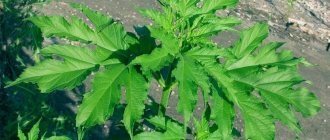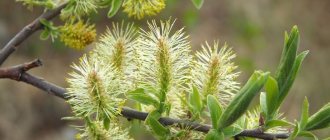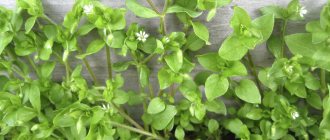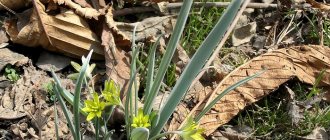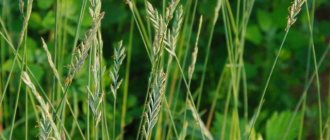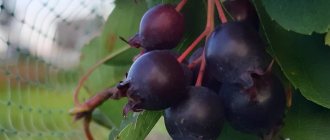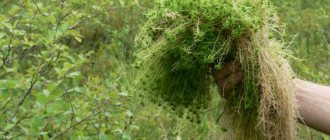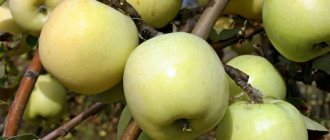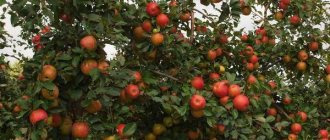Amur velvet is a perennial with a spreading crown, belonging to the Rutov family. With its impressive size, the tree can confidently claim the title of giant. Now it is actively used for landscaping parks, streets, and garden plots.
This beautiful and hardy plant performs not only a decorative function, but also treats many diseases. Its other names are phellodendron, Amur cork tree. It was called cork because the surface of the bark is wrinkled and velvety.
Place of growth
The tree grows alone or in small groups. In our country, it is widespread in Sakhalin, the Kuril Islands, the Khabarovsk Territory, and the Far East. It also grows in other countries ─ Japan, Korea, China.
Velvet prefers hills, mountain slopes no higher than seven hundred meters above sea level, and deciduous forests. This is a relict plant, considered a living natural monument. The history of its appearance comes down to the Ice Age. Cultivated specimens have now begun to be imported and bred in new territories ─ in Asia, America, Europe, and the Caucasus.
Peculiarities
This dioecious deciduous tree is a long-liver, growing in one place for up to three centuries. The appearance is similar to common ash.
The height reaches a maximum of 26-28 meters, and the growth rate is very rapid. The trunk thickness is 1-1.5 meters. It is covered with gray bark, velvety and soft to the touch. In young plants it is completely smooth and has a silvery tint. After cutting off the cork layer, the bark darkens.
Thanks to the powerful rod system, the impressive mass of the plant is well supported.
The dark green, odd-pinnate leaf blades are lanceolate in shape and located on the central petioles. The edges are jagged, which gives them a decorative appearance. When you rub the leaves in your palms, they give off a specific resinous smell. They bloom at the end of May or even at the beginning of summer. The crown is tent-shaped in wide areas and raised high in forests.
The flowers are small, inconspicuous, collected in inflorescences. The petals have a yellow-green tint. The flowering period of Amur velvet occurs at the beginning of summer. At this time, insects are actively collecting nectar. The tree blooms for the first time only in the 18-19th year of life.
The fruits have a spherical shape and a glossy surface, similar in appearance to pearls. Inedible, have a specific smell. Maximum they stay on the tree until mid-winter.
The berries ripen in September. The harvest lasts from August to early autumn. One tree produces approximately ten kilograms of berries. Before storing, be sure to dry them in the open air. One berry contains from 5 to 10 seeds. The latter have a patterned surface and a teardrop shape.
Landing
Growing phellodendron is a painstaking and meticulous process because it extends over time. To successfully grow it, certain conditions must be met. First of all, this is the right place to plant the tree. Since the breed is light-loving, the area should be well lit or at least with partial shade. Shaded places are extremely undesirable. The soil needs to be slightly acidic, moist and fertile. Sand is absolutely not suitable. Stagnation of groundwater is unacceptable. The right time of year is early spring, when the earth has already warmed up a little.
Important rules:
- When planting, it is important to consider the lifespan of Amur velvet and its future size. There should be no buildings or communications nearby.
- Planting is carried out with grown seedlings. It is best if these are mature, six-year-old plants. They can be purchased in specialized stores. Since they tolerate transplantation well, they very soon take root in a new area.
- Planting is carried out in autumn or spring.
- If several trees are planted, then an interval of at least 5 meters should be maintained between them. Each specimen requires this space for a comfortable existence.
Algorithm of actions:
- Preparing a planting hole. Its dimensions should exceed the size of the root system of a young plant by a third.
- If the soil has increased density, then a drainage layer consisting of crushed bricks should be laid in the hole.
- Sprinkle the nutrient mixture on top. Suitable composition: turf soil, humus, river sand.
- Spread the roots, place the seedling, sprinkle with soil.
- Provide the plant with abundant watering. Pour a bucket of water under each specimen. Under no circumstances should the soil dry out for the first five or six days. The best option is to carry out the planting procedure in rainy weather.
- Mulching the soil with dry grass, tree bark, sawdust, sunflower husks.
Medicinal use
Amur velvet, called Huang Bai in China, is commonly used in Chinese medicinal balm, where it is considered one of the 50 essential herbs, but with caution. A strong bitter remedy, a squeeze from the bark and fruit acts on the kidneys and is considered a detox for various diseases.
Recent studies have shown that the plant is useful in the treatment of meningitis and conjunctivitis. Huang Bai should only be used under professional supervision and should not be taken by children or women during pregnancy.
Areas of use
- The bark is an alternative to antibiotics.
- It has antibacterial, antirheumatic, choleretic, diuretic, expectorant, antipyretic, hypoglycemic activity.
- Widely used in ophthalmology and dermatology.
- Berries have the ability to reduce sugar in diabetes mellitus.
- Elderly use is indicated as a vasodilator and tonic.
- The fruits are taken orally for the treatment of acute diarrhea, dysentery, and jaundice.
- For vaginal infections, including Trichomonas.
- Acute urinary tract infections.
- Diabetes.
- A strong aphrodisiac.
- And a whole endless list of uses: enteritis, boils, abscesses, night sweats and much more.
It is widely used in combination with Scutellaria baicalensis and Coptis chinensis in a preparation called Three Yellow Herbs Injection. It is administered intramuscularly to relieve upper respiratory tract infections.
The bark of 10-year-old trees is collected in winter or spring and dried for later use.
Weight loss
Some studies show that overweight women who consume a complex supplement containing a combination of Amur velvet and magnolia extracts for 6 weeks experience significant weight loss. Women taking this supplement consumed fewer calories than the control group. One possible explanation is that this product has the ability to reduce stress and the associated increased appetite. But this theory is just a guess because it has not yet been proven whether the product reduces the stress hormone called cortisol.
Psoriasis
There are many reports of successful treatment of psoriasis with an ointment based on Amur velvet bark extract, including in children. This ointment kills germs and reduces redness and swelling.
Medicinal berries of the plant for diabetes
The black berries of the velvet tree, which remain hanging on the branches until winter, are rich in antioxidants. A few berries eaten on an empty stomach in the morning lower blood sugar by 23% with a lasting effect throughout the day. The main condition is not to drink it with water, but just chew it slowly. Use is indicated for diabetes mellitus, especially type 2.
When taking 5 berries, sugar decreases too sharply, which can lead to disastrous results, so it is important not to overuse the fruits. 2-3 velvet berries per day will give the desired therapeutic effect.
How Amur velvet works
Certain chemicals in philodendron may reduce inflammation and swelling. Another chemical, berberine, may lower blood sugar and “bad” cholesterol and protect the liver from toxic substances. Berberine is chemically classified as protoberberine, which is a group of isoquinoline alkaloids. Its primary biochemical actions include suppression of cytokines that cause inflammatory responses. Berberine may also be active against tumors. However, in large doses it causes harm to the body.
Reproduction
Amur velvet can be propagated in two ways: seeds and cuttings.
Seeds
For sowing, only fresh seeds from ripened fruits are taken. It is very easy to determine their maturity. If you place the fruit in water, oil circles will form from the ripe specimen. Freshly harvested seeds should be sown before winter. If sowing is planned for early spring, then they must undergo preliminary stratification for three months. This is aging in cool conditions (in a cellar or refrigerator) until germination. If such a procedure has not been carried out, then pre-soaking the seeds in hot water will do. This is done three or four days before sowing. Next, they are placed in the soil to a depth of 2-3 cm. The seedlings will grow better if the soil is first fertilized with potassium permanganate or phosphate fertilizers. In the future, you should loosen and mulch the soil, regularly water the area, and weed out the weeds.
The germination rate of Amur velvet is from 60 to 80%, which is a very good indicator.
Cuttings
Cuttings are cut in spring. For several weeks before rooting, they are buried in moist soil. This is not a very popular method, because root suckers do not have high rooting ability.
Benefits of berries
According to scientific research, it has been found that consuming Amur velvet fruits leads to a decrease in blood sugar levels, which is a key point in the prevention and treatment of diabetes. For diabetes, three or four berries are consumed on an empty stomach. They are chewed and swallowed without water or any other liquid. In order to lower blood sugar to normal levels, you should take the berries daily for six months.
Amur velvet berries are used to treat colds and flu. To treat these diseases, you should consume one fruit per day, chewing thoroughly for several minutes. After taking velvet berries, it is not recommended to drink water for six hours.
To reduce blood pressure, the fruits should be taken daily, one piece thirty minutes before meals. In addition, regular consumption of these fruits in small quantities improves metabolism and normalizes the functioning of the pancreas.
Care
While the phellodendron is young, it must be carefully and painstakingly cared for. But a matured and stronger specimen no longer requires additional attention and care.
Recommendations:
- Amur velvet should be watered frequently and abundantly. Especially if dry periods occur.
- To prevent the soil from drying out, the area can be mulched with wood chips or peat. Another option is to plant lawn grass nearby.
- Feeding is carried out in the spring. Suitable fertilizers are ammonium nitrate, urea, mullein.
- During the same period, pruning of dried branches is done.
- The plant has a thick cork layer, so whitewashing the trunk is not necessary. He is not afraid of the spring sun.
- Frost-resistant, tolerates cold winters well. Shelter for the winter period is required only for seedlings. The trunk circle is covered with fallen leaves. The trunk is wrapped in burlap in one or two layers.
- When frost damage appears on young trees, they must be treated with any antiseptic.
In general, the plant is unpretentious. In city conditions, it easily adapts even to high air pollution.
Medicinal properties
Phellodendron has found wide use in folk recipes in many countries. Almost all parts of the plant are used for therapeutic purposes. They are used to prepare decoctions, infusions and tinctures, and ointments. Even in ancient times, the Chinese knew the miraculous power of the Amur cork tree. The chemical composition of phellodendron contains saponins, tannins, and coumarins. The leaves are rich in essential oils, flavonoids, phytoncides, tannins.
Preparations made on its basis have many useful and medicinal properties. They have antimicrobial, hemostatic, antipyretic, hypotensive, and fungicidal effects.
In folk medicine, the plant is used to treat a number of diseases and pathological conditions.
Among them:
- arthritis and arthrosis;
- allergies;
- high blood pressure;
- gastroduodenitis;
- jades;
- skin rashes;
- diabetes;
- pneumonia;
- acute respiratory viral infections;
- lymphadenopathy;
- stomatitis.
During treatment you will have to stop drinking coffee, strong tea, and alcoholic beverages. Also, smoking cigarettes is strictly not recommended.
Meaning and Application
The use of Amur velvet is quite wide. The plant has become most widespread as a raw material for the manufacture of medicines:
- Amur Velvet bast is used in medicine as an antipyretic and anti-inflammatory agent. Also, all kinds of tinctures, ointments, and powders based on the bark are widely used to treat inflammation of the gastrointestinal tract, diseases of the respiratory system, and various infections (hepatitis, dysentery).
- The Amur velvet berry is an excellent raw material for infusions or decoctions that are used to treat diabetes and all kinds of respiratory diseases (pneumonia, pleurisy, tuberculosis).
- Leaves, fruits or bark can be brewed individually or together. Alcohol tinctures are used to rinse the mouth, for cholecystitis, hypertension and other diseases.
Amur velvet contains a number of toxins, which, if used excessively, can cause dizziness, allergic reactions, suffocation, and nausea.
Wood is not used as such, the value is the thick bark, reminiscent of cork, it has the same properties: light, waterproof, flexible. It is often used in the manufacture of finishing materials, wine stoppers, shoes and haberdashery. Amur velvet cork is used to fill life jackets.
Despite the unattractive appearance of Amur velvet flowers, bees do not fly around them. Honey from the velvet tree is very aromatic and tasty, with a slightly greenish tint. It is considered an effective anti-tuberculosis agent.
Honey
Its quality and quantity directly depend on weather conditions. This is due to the fact that the flowering period is very short. In case of bad weather, bees will not be able to collect nectar, but in good weather, Amur velvet will be an excellent honey plant. Velvet honey is considered elite and has a number of unique properties. Among them:
- long shelf life;
- low glucose content;
- lack of crystallization.
It's not cheap, but the price is well justified by the quality. It is used to treat tuberculosis, boost the body's immune strength and correct hormonal imbalances.
Amur velvet wood
The picturesque name of the plant is clearly emphasized by its unusual bark: on the outside it is velvety to the touch. It is often used in production as a replacement for cork oak bark.
Light and durable Amur velvet wood is characterized by a spectacular dark yellow color and an expressive cut (both longitudinal and oblique) with beautiful stains and a charismatic pattern. Furniture makers fell in love with it because it practically does not rot and is not a favorite food for insects. The structure of valuable wood resembles noble ash, but the shade is much darker.
Experts readily use Amur velvet in the production of furniture, baguettes, veneer panels and plywood. The wood does not dry out, does not warp and is easily polished, and with careful processing it gives a charming silky shine.
Landscape design
Amur velvet is loved by landscape designers for its decorative crown. With its splendor and luxurious appearance, it can decorate any site or park area. In addition, the plant helps purify the air from bacteria. For this reason, it is highly valued in gardening construction.
The cork tree looks good in combination with barberry, juniper, thuja and other low-growing bushes. To shade the trunk, honeysuckle and currants are suitable. Joint plantings with maple, linden, birch and spruce look impressive. They resemble a fairy forest.
If you plant lawn grass under the openwork crown, this will make the area neat and well-groomed.
Gardeners who want to create a favorable atmosphere in their garden should pay attention to Amur velvet. Also, it will be of interest to collectors of relict plants and hereditary beekeepers.
Benefits of leaves
The leaves of this wonderful plant have anthelmintic, anti-putrefactive and antimicrobial properties. Therefore, they are widely used in the prevention and treatment of parasites.
An infusion of Amur velvet leaves is taken to improve digestion and normalize metabolism. To prepare it, take thirty grams of crushed dried leaves, pour a quarter liter of hot water over them and leave for two to three hours. After the product has infused, it is filtered and taken before meals, one tablespoon at a time. Store this infusion in a sealed container in the refrigerator.
